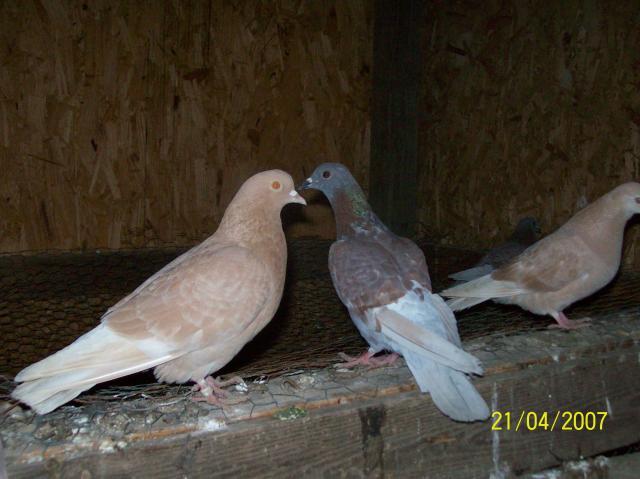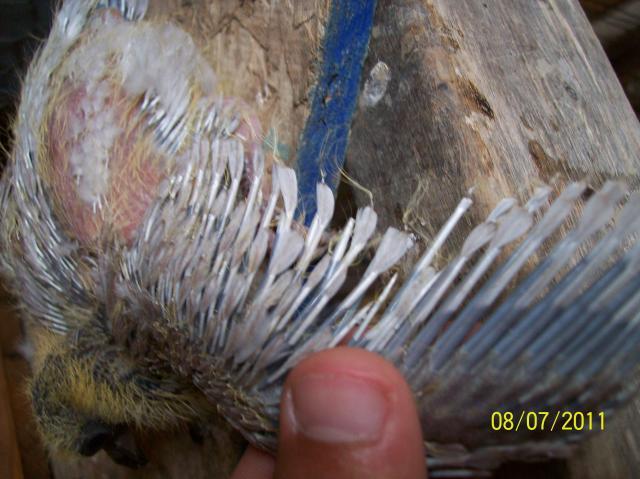Is the color blue in pigeons dominate?
Navigation
Install the app
How to install the app on iOS
Follow along with the video below to see how to install our site as a web app on your home screen.
Note: This feature may not be available in some browsers.
More options
You are using an out of date browser. It may not display this or other websites correctly.
You should upgrade or use an alternative browser.
You should upgrade or use an alternative browser.
Is the color blue in pigeons dominate?
- Thread starter cheyfrie26
- Start date
Yes and no. There are three base colors. All pigeons are one or the other. Ash-red is the most dominant, then comes blue, and last is brown. Ash-red cockbirds can carry blue or brown recessively (as in, it doesn't show up). Blue cockbirds can carry brown recessively. But brown birds have to be "pure" brown (homozygous for brown). They can't carry other colors because there's no room! Hens on the other hand, are what you see. They cannot carry another base color. The reason is because base colors are on the X chromosome. Birds are the opposite from us - instead of the males being XY like humans, they are XX in birds. Hens are XY in the bird world. (technically birds are ZW and ZZ but whatever, LOL).
Last edited:
- Thread starter
- #3
I'm super confused. But I have a Ash-red cock and a yellow hen. Their baby is looking blue?!
your red cock bird will be split for blue.... unless we're talking rec red .... post a pic of the cock and hen... if no rec red involved then you have a female chick...
- Thread starter
- #5
The hen is to the far right and the cock is in the middle.


- Thread starter
- #6
Heres the squab.
It looks like its going to be a light grey with red splashes?


It looks like its going to be a light grey with red splashes?


Last edited:
Yeah that baby is going to be ash-red. If your cockbird has any blue/black flecks on him, then he is carrying blue. If he is, then half of their kids will be blue, and half of their kids will be ash-red. If he isn't carrying blue (or brown), then you'll get all ash-red kids. The only way you could get ash-yellow is if he is carrying dilute.
- Thread starter
- #8
How long until their weaned? I will take the hen and put her with a yellow cock.
Anywhere from 25-31 days old. Depends on how dedicated the parents are and how long you choose to let them stay in the nest before you move them onto the floor to speed things up. Since I have racing pigeons, all of my young birds go into a separate loft from the old birds and breeders. So usually at 28 days old, I take them out and put them in the loft with the other squeakers. Unless they are just taking a long time or they were stunted and need more time, they are typically all eating and drinking on their own (or at least know how to - although most will still chase their parents).
When the babies are bred in a loft, I start putting them on the floor around 25 days old so they can see the others eat and drink. Most of my pairs are bred in individual cages so I don't have to worry about it, as the nest bowl, food, water, and perch are all right there within a few feet. So the babies watch the parents from day one. But in a loft they don't have the priviledge of just walking over - instead they have to take that jump down to the floor. So it takes them a bit longer to finally leave the nest in that case.
When the babies are bred in a loft, I start putting them on the floor around 25 days old so they can see the others eat and drink. Most of my pairs are bred in individual cages so I don't have to worry about it, as the nest bowl, food, water, and perch are all right there within a few feet. So the babies watch the parents from day one. But in a loft they don't have the priviledge of just walking over - instead they have to take that jump down to the floor. So it takes them a bit longer to finally leave the nest in that case.
- Thread starter
- #10
Well even with nests provided my birds nest on the floor.
New posts New threads Active threads
-
Latest threads
-
-
-
-
-
Australorp acting weird/maybe eggbound?
- Started by Australorp567
- Replies: 0
-
-
Threads with more replies in the last 15 days
-
-
-
Open Contest Waterfowl & Water Photo Contest
- Started by Kiki
- Replies: 75
-
Ended Official BYC Poultry Caption Contest 05-23-25 Pic by AidKD
- Started by TwoCrows
- Replies: 71
-
Solved Attach files picture uploading
- Started by Kiki
- Replies: 62
-
×
